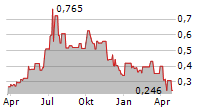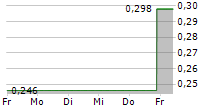
MONTREAL, Feb. 27, 2025 (GLOBE NEWSWIRE) -- PyroGenesis Inc. ("PyroGenesis") (http://pyrogenesis.com) (TSX: PYR) (OTCQX: PYRGF) (FRA: 8PY1), a high-tech company that designs, develops, manufactures and commercializes all-electric plasma processes and sustainable solutions to support heavy industry in their energy transition, emission reduction, commodity security, and waste remediation efforts, announces today that, further to HPQ Silicon Inc's ("HPQ") press release dated today, and PyroGenesis' own news releases dated February 6, 2024 and March 12, 2024, the next milestone for the fumed silica reactor ("FSR") pilot plant has been reached, with its successful week-long operation and the production of the first batch of materials. This initial test was designed to evaluate the system's ability to precisely regulate the feedstock thermal profile, encompassing pre-heating, controlled heating rates, and stabilization at target operational parameters required for fumed silica synthesis.
The material produced was visually analyzed and confirmed to be consistent with material seen in the previous lab-scale production. Comprehensive analysis will be conducted at an independent laboratory, to verify structural and chemical properties with more quantitative data, and to validate product quality, all of which will be used for next step process optimization related to further tests. Of note, the FSR pilot plant is a 20-fold scale up of the lab-scale system. The next three batch tests will focus on achieving consistent and repeatable production of high-surface-area fumed silica, ensuring that product specifications align with or exceed those achieved at lab scale.
"Since 1944, the fumed silica industry has relied on the same conventional, fossil-fuel-intensive production methods. At PyroGenesis, we are committed to breaking that cycle through innovation," said P. Peter Pascali, President and CEO of PyroGenesis Inc. "The fumed silica reactor represents a potentially revolutionary shift - scaling up a plasma-based process that eliminates carbon emissions while maintaining superior product quality. By decarbonizing this industry, we are not just enhancing efficiency; we are aiming to a new standard for sustainable, commercially viable fumed silica production, empowering clients with a cleaner and more reliable process."
The FSR technology project is being conducted in conjunction with HPQ Silica Polvere Inc. ("HPQ Polvere"), a wholly owned subsidiary of HPQ. PyroGenesis previously announced in a press release dated May 30, 2024, its intent to exercise its right to convert its annual royalty rights into a 50% ownership stake of HPQ Polvere pursuant to a design and development agreement.
Fumed silica is a moisture-absorbing white microstructure powder with high surface area and low bulk density. Used most often as a thickening agent, anti-caking agent, and stabilizer to improve the texture and consistency of products, the commercial applications of fumed silica can be found in many industries across thousands of product lines, including - but not limited to - personal care, powdered food, pharmaceuticals, agriculture (food & feed), adhesives, paints, sealants, construction, batteries and automotive.
In the FSR project, PyroGenesis is the exclusive supplier of a technology capable of using quartz (SiO2) as a raw material to produce commercial-grade fumed silica in a single and eco-friendly step while eliminating the use of harmful chemicals generated by conventional methods.i The FSR pilot plant, if successful, could provide a groundbreaking contribution to the repatriation of silica production to North America.
On July 9, 2024, PyroGenesis announced that HPQ Polvere had signed a letter of intent with Evonik Corporation, a global specialty chemicals company. The objective of HPQ Polvere's letter of intent with Evonik is to outline the basis of collaboration during the FSR pilot scale phase with the goal to validate the ability of the FSR to produce low-cost, low-carbon material acceptable to Evonik's specifications.
The FSR pilot plant exists within a dedicated space inside PyroGenesis' facilities, with a custom-designed infrastructure that meets the pilot plant's unique ventilation, safety, and access requirements. A 4,000 sq ft facility with a 30-foot height allowance was allocated to house the pilot plant, which itself has an approximate layout footprint of 50ft by 30ft. The FSR pilot plant has a 50 TPY output capacity.
In addition, results announced by PyroGenesis (refer to the Company's news release dated January 11, 2024) from an internal economic and technical study, which was carried out at the request of a third-party who requested confidentiality, confirmed the viability of, and advantages from, the eventual scale up to a 1,000 TPY commercial configuration. These advantages included potential EBIDTA margins three times higher than the industry average of 20%, and a capital investment 93% less than that required for building a conventional fumed silica plant. ii
The fumed silica market, valued at US$1.3 billion in 2022, is expected to grow at a CAGR of 5% to reach US$2.1 billion by 2032. Fumed silica sales accounted for almost 23% of the global specialty silica market at the end of 2021. iii
PyroGenesis' involvement in developing fumed silica from quartz is part of its three-vertical solution ecosystem that aligns with economic drivers that are key to global heavy industry. Metal powders are part of PyroGenesis' Commodity Security & Optimization vertical, where the development of advanced material production techniques, and the use of technology such as plasma to recover viable metals, chemicals, and minerals from industrial waste, helps to maximize raw materials and improve the availability of critical minerals. Titanium has been identified as a critical mineral by the Canadian government. The Company's other verticals are Energy Transition and Emission Reduction and Waste Remediation.
About PyroGenesis Inc.
PyroGenesis, a high-tech company, is a proud leader in the design, development, manufacture and commercialization of advanced plasma processes and sustainable solutions which reduce greenhouse gases (GHG) and are economically attractive alternatives to conventional "dirty" processes. PyroGenesis has created proprietary, patented and advanced plasma technologies that are being vetted and adopted by multiple multibillion dollar industry leaders in four massive markets: iron ore pelletization, aluminum, waste management, and additive manufacturing. With a team of experienced engineers, scientists and technicians working out of its Montreal office, and its 3,800 m2 and 2,940 m2 manufacturing facilities, PyroGenesis maintains its competitive advantage by remaining at the forefront of technology development and commercialization. The operations are ISO 9001:2015 and AS9100D certified, having been ISO certified since 1997. PyroGenesis' shares are publicly traded on the TSX in Canada (TSX: PYR), the OTCQX in the US (OTCQX: PYRGF), and the Frankfurt Stock Exchange in Germany (FRA: 8PY1).
About HPQ Silicon
| HPQ activities are centred around the following five (5) pillars: | |
| (1) | Becoming a green low-cost (Capex and Opex) manufacturer of Fumed Silica using the FUMED SILICA REACTOR, a proprietary technology owned by HPQ Silica Polvere Inc being developed for HSPI by PyroGenesis. |
| (2) | Becoming a producer of silicon-based anode materials for battery applications with the assistance of NOVACIUM SAS. |
| (3) | HPQ SILICON affiliate NOVACIUM SAS is developing a low carbon, chemical based on demand and high-pressure autonomous hydrogen production system. |
| (4) | HPQ SILICON affiliate NOVACIUM SAS is developing a new process to transform black aluminium dross into a valuable resource. |
| (5) | Becoming a zero CO2 low-cost (Capex and Opex) producer of High Purity Silicon (2N+ to 4N) using our PUREVAPTM "Quartz Reduction Reactors" (QRR), a proprietary technology owned by HPQ being developed for HPQ by PyroGenesis. |
For more information, please visit HPQ Silicon web site.
Cautionary and Forward-Looking Statements
This press release contains "forward-looking information" and "forward-looking statements" (collectively, "forward-looking statements") within the meaning of applicable securities laws. In some cases, but not necessarily in all cases, forward-looking statements can be identified by the use of forward-looking terminology such as "plans", "targets", "expects" or "does not expect", "is expected", "an opportunity exists", "is positioned", "estimates", "intends", "assumes", "anticipates" or "does not anticipate" or "believes", or variations of such words and phrases or state that certain actions, events or results "may", "could", "would", "might", "will" or "will be taken", "occur" or "be achieved". In addition, any statements that refer to expectations, projections or other characterizations of future events or circumstances contain forward-looking statements. Forward-looking statements are not historical facts, nor guarantees or assurances of future performance but instead represent management's current beliefs, expectations, estimates and projections regarding future events and operating performance.
Forward-looking statements are necessarily based on a number of opinions, assumptions and estimates that, while considered reasonable by PyroGenesis as of the date of this release, are subject to inherent uncertainties, risks and changes in circumstances that may differ materially from those contemplated by the forward-looking statements. Important factors that could cause actual results to differ, possibly materially, from those indicated by the forward-looking statements include, but are not limited to, the risk factors identified under "Risk Factors" in PyroGenesis' latest annual information form, and in other periodic filings that it has made and may make in the future with the securities commissions or similar regulatory authorities, all of which are available under PyroGenesis' profile on SEDAR+ at www.sedarplus.ca. These factors are not intended to represent a complete list of the factors that could affect PyroGenesis. However, such risk factors should be considered carefully. There can be no assurance that such estimates and assumptions will prove to be correct. You should not place undue reliance on forward-looking statements, which speak only as of the date of this release. PyroGenesis undertakes no obligation to publicly update or revise any forward-looking statement, except as required by applicable securities laws.
Neither the Toronto Stock Exchange, its Regulation Services Provider (as that term is defined in the policies of the Toronto Stock Exchange) nor the OTCQX Best Market accepts responsibility for the adequacy or accuracy of this press release.
For further information please contact:
Rodayna Kafal, Vice President, IR/Comms. and Strategic BD
E-mail: ir@pyrogenesis.com
http://www.pyrogenesis.com
i 2012 - Executive summary: "SILICON-CHEMISTRY CARBON BALANCE, AN ASSESSMENT OF GREENHOUSE GAS EMISSIONS AND REDUCTIONS", Covering the Production, Use and End-of-Life of Silicones, Siloxanes and Silane Products in Europe, North America, and Japan. [Pages 20 to 21] (Commissioned by Global Silicones Council, Centre Européen des Silicones, Silicones Environmental, Health and Safety Council of North America Silicone Industry Association of Japan).
ii Traditional Fumed Silica manufacturing involves a complex three-step process:
Step 1: Conversion of Quartz to Silicon Metal (Si), with an average Capex of around US$9.38 per kilogram of annual capacity (for reference, the PCC BakkiSilicon Plant in Iceland cost US$300 million for an annual capacity of 32,000 tonnes).
Step 2: Conversion of Si to Silicon Tetrachloride (SiCl4), with an average Capex of approximately US$125.00 per kilogram of annual capacity (e.g., Wacker Chemie AG Polysilicon's US production plant cost US$2.5 billion for an annual capacity of 20,000 tonnes).
Step 3: Burning Silicon Tetrachloride (SiCl4) with Hydrogen and Oxygen to produce Fumed Silica (SiO2), incurring an average Capex of around US$11.54 per kilogram of annual capacity (Wacker Chemie AG's US Fumed Silica plant cost US$150 million for an annual capacity of 20,000 tonnes). The combined Capex for these three steps averages at US$145.92 per kilogram of annual capacity. According to a rough order of magnitude study by PyroGenesis, our one-step process for making Fumed Silica is estimated to have an average Capex per kilogram of annual capacity between US$9.00 and US$10.00, which is approximately 93% less than traditional processes.
iii https://www.factmr.com/report/2301/fumed-silica-market



